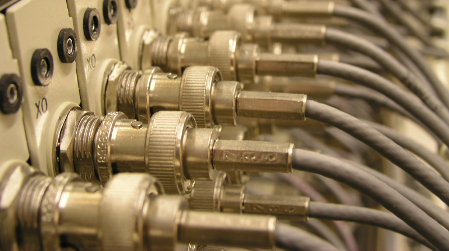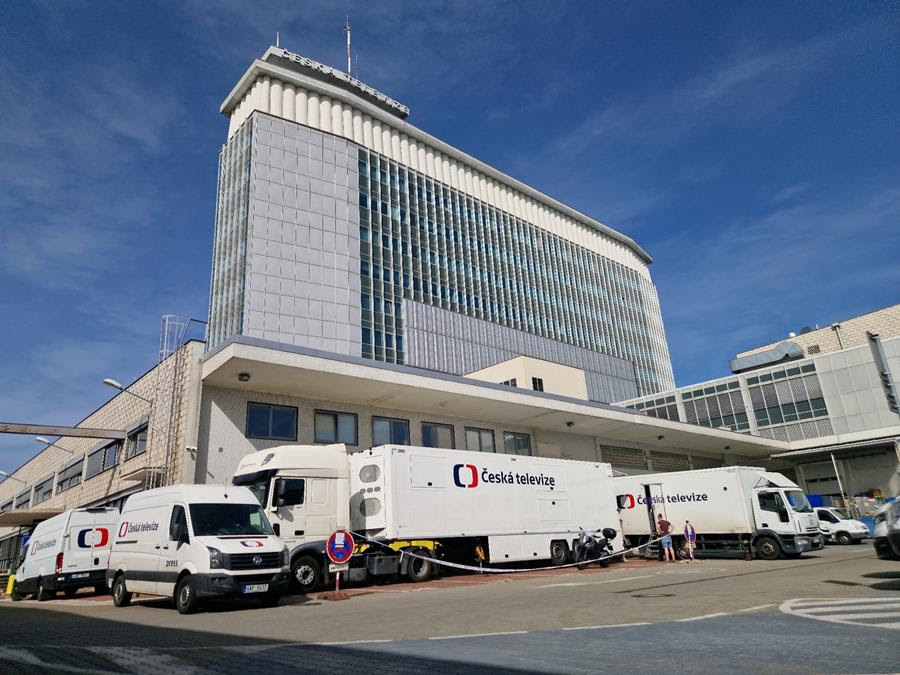To IP or Not to IP: Should You Pull the Plug on Coax?
This article is the second in a series written by Tom (T.V.) Burns dedicated to examining the intersection of technology, innovation and evolving protocols and formats within the media and entertainment industry.
As I mentioned in my previous blog, the media and entertainment industry is ripe for disruption thanks to the introduction of new platforms, business models and workflows. Having just spent the last 15 years on “the other side” as a director at Technicolor, it’s easy for me to slip back into the role of the customer when I’m considering the potential impact of these new technologies on the industry.
Lately, the most pressing concern among my colleagues and peers is how to cope with the looming migration away from HD-SDI infrastructure to IP networks and storage, file-based workflows. Most broadcast production and distribution chains are already performing most of their operations through IP, so why is everyone wary of this particular workflow shift? It all comes down to the fear of the unknown. Yes, HD-SDI may be costly and clunky, but broadcasters accept its flaws because they don’t have to worry about dropped packets. For many, the quality assurance of HD-SDI outweighs the advantages IP offers, including the ability to use off-the-shelf IP networking technology, which can dramatically reduce costs for a facility.
In this blog, I’ll detail how IP’s journey up the stack to reach innovation status has been met with some resistance and the pros and cons to IP adoption for broadcast.

The transition to file-based production can be traced back to the introduction of Non-Linear Editing (NLE) in 1971. Commercials and short-form programs were managed by an automation system and aired directly from a server. In the early 1990s, we moved to decoding those files in order for them to be played as analog. From there, we were able to expand those systems to support long-form programs, which resulted in an automated playout system integrated with file-based commercial insertion.
Up until recently, video has traditionally been a deterministic linear channel represented as a mass of coax, terminated in a BNC connector and transmitted as the signal format SDI and the high-def version, HD-SDI. Simply put, this is how most of us receive the programs we watch when we turn on our televisions to view a show that was recorded live and scheduled to air at a later time. While it won’t happen overnight, I think there are several factors that are contributing to the inevitable move away from this real-time dedicated infrastructure.
IT PAYS TO SCALE: THE RISE OF THE GENERIC IT INFRASTRUCTURE
The biggest change in broadcast, OTT and post production is we’re no longer bound to the custom infrastructure that evolved to suit the broadcast world.
The professional video industry's #1 source for news, trends and product and tech information. Sign up below.
Economies stand to gain significantly by scaling and moving to common off-the-shelf technologies, IP-based networks and IP-based storage because of the reduced costs, increased ROI and easier maintenance.
For instance, in the video world, a VTR is a fantastically efficient storage mechanism, but it’s formatted for only one file type and that’s a serial digital video stream that can play from zero to 60 minutes without any dropped packets and loss.
For the last 50-70 years, the broadcast industry has been forced to custom engineer around these unique formats.
We’re now finally concentrating on using generic computers and a generic IT type of infrastructure with Ethernet networks and virtualized servers, as opposed to a dedicated VTR and a bespoke network that is designed around a single file format for only one purpose. We’ve got the wild and wooly Internet specifically trying to carry video-based signals packetized into an IP format over long and short distances.
There are two forces behind this move to embrace a more generic hardware and infrastructure. It’s a push and pull at the same time.
For EMC, the pull is essentially our customers’ customers. For example, we provide storage solutions to MLBAM, who works with broadcast networks, who sell to subscribers. These subscribers want to be able to consume content and video on different platforms, such as mobile devices and tablets.
For many facilities, the push is purely cost at the infrastructure level. In custom video-oriented networks, routers can cost half a million dollars whereas VTRs are priced at a third of that. Also, broadcasters looking to implement more outputs at their facilities will find it’s much more expensive to install HD-SDI video routing technology versus Ethernet technologies.
THE FUTURE OF IP
As it stands today, IP is not a 100 percent slam dunk. Five years ago, it would have been all coax, and five years from now, I predict it will be all IP; but not just yet. In order for the transition from the current HD-SDI infrastructures to IP networks and storage flow, file-based workflows to be successful, there’s still some work to be done and different protocols and infrastructure deployments to be navigated. Although SMPTE is making great strides with its 2022 standard that proposes everyone have a standard format for doing video in a packetized medium such as Ethernet, it’s still a question mark as to who is going to win the protocol race.
Some brave souls, such as ESPN and ABC, have leapt in with both feet. However, both my customer and vendor sensibilities would caution against going all IP today. There are a couple of reasons that indicate there is no real rush to move over to IP. The first reason is that it is in broadcasters’ best interest to have both coax and IP. If the coax is already there, there’s no need to spend the resources to rip it out. It reminds me of the transition to HD. It was gradual, with HD islands in the middle of an SD plant and file-based islands in the middle of a HD-SDI plant.
While IP networks and storage flow, file-based workflows may have to wait a few more years to be considered a standard on the stack, their impact is already evident in the broadcast community. In fact, IP-based routing is playing a major role in the march towards 4K production, a topic I’ll explore in my next blog.
